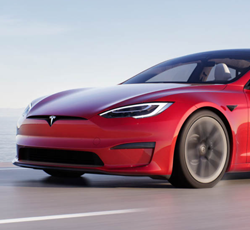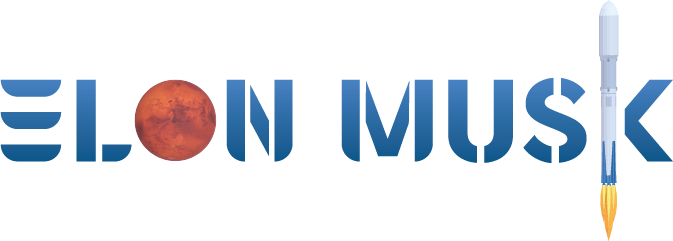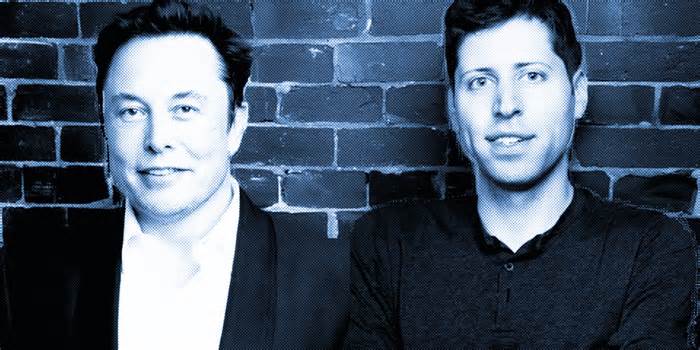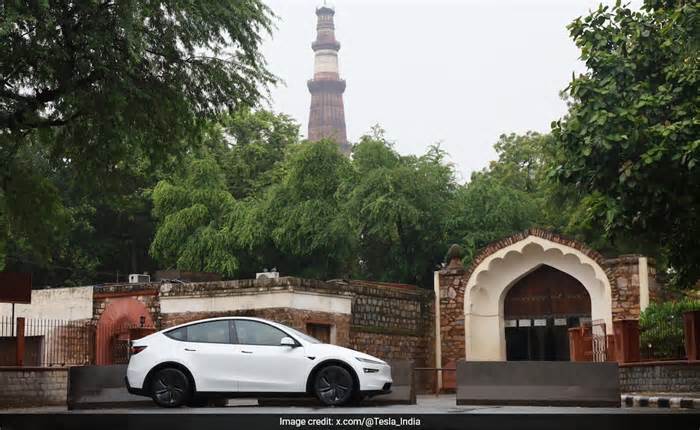
SpaceX launches commercial resupply mission to ISS from Florida
- by WESH
- Nov 05, 2024
- 0 Comments
- 0 Likes Flag 0 Of 5

SpaceX launches 31st commercial resupply mission to International Space Station Monday night
SpaceX launches 31st commercial resupply mission to International Space Station Monday night
Dragon is in terminal account and is on internal power. There is that call out for dragon transitioning to internal power and ahead of the transporter erector reclining, you'll see the clamp arms just below dragon begin to open the transporter erector is designed to transport rays and support Falcon nine at the launch pad and uses its umbilicals or flexible lines to route the vehicle's fluids, power and telemetry from ground systems to the rocket and payload until falcon nine switches to internal power. There. You can see those clam farms beginning to open right under dragon at the top of the second stage. You should see that trust structure on the right on countdown. LD. Polling for MD for final status check. MD is go for launch. You see the transport rector reclining from Falcon nine. There it is fully reclined from Falcon nine. The range is also green and ready to support. If for some reason we are not able to launch tonight, we do have *** backup opportunity tomorrow, Tuesday, November 5th at 8:06 a.m. central time 9:06 a.m. eastern at this point in the countdown, both the 1st and 2nd stages are nearly fully loaded with 1 million pounds of kerosene fuel and liquid oxygen at T minus 60 seconds. Falcon nine will be in start up. This means that the rockets autonomous internal flight computers have taken over in the launch countdown and just inside T minus two seconds will light the Merlin one D engines for liftoff. The vehicle continues to be healthy and the Falcon nine team is tracking no issues. Currently, the weather is green and the range is ready to support *** T zero at 9:29 p.m. Eastern time, weather is looking good. And in these last few minutes, Falcon nine is performing final health checks on the primary communications avionics and propulsion systems ahead of launch stage two. With that, we're hearing the check out of the second stage thrust vector control actuators underway and referred to as the engine gibble or wiggle test. And this is when SpaceX moves the nozzles ever so slightly to make sure that the guidance hardware is acceptable for flight. And as Dragon now moves into auto, I continues those checkouts for the first stage engines and that happens just seconds before ignition at the time of launch, the International Space Station will be flying on 260 statute misal crossing the Atlantic Ocean. Falcon nine is in start up. Dragon is countdown, go for launch there, there is that final launch director go. All systems are go for launch of Falcon nine and the Sierras 31 mission t minus 30 seconds, 15 seconds. T minus 10, 987654321 ignition, digital power. And with uh go SpaceX, go FPGVX down. Right. And we have lift off nasa's Space X 31st commercial resupply mission is on its way to the International Space Station, carrying science supplies and the spirit of exploration. Ok. During ascent, we will tilt or gimble the engines guiding the rocket into what we call *** gravity turn. Now, during this turn, the vehicle is flying both up and horizontally away from the launch pad. Rocket. No typically needs to go seven 1005 100 MPH horizontally. In order to nine is supersonic. Avoid getting pulled back down to earth. You just heard that call out that Falcon nine is supersonic and shortly we'll be throttling the engines back in preparation for Max Q. Max Q. There is that call for Max Q. That's the maximum aerodynamic pressure that the vehicle will see during ascent and coming up shortly, we will have *** few events in quick succession. Starting with main engine cut off, followed by stage separation. Second engine chill, second engine start up one and the boost back burn of the first stage. You just heard the call out for the second stage engine chill starting in preparation for that engine start up. Ok. We are just about 30 seconds away from main engine cut off where the nine Merlin one D engines on the first stage will shut down shortly after that, the stage one and two will separate from one another and the m back engine on the second stage will start. Second engine start one is when we ignite that single Merlin vacuum engine of the second stage. Shortly after that, the boost back burn will start on the first stage. There's main engine cut off, main engine cut off stage separation, confirmed stage separation stage two. And there you can see *** beautiful view of the concurrent second stage engine start along with the start of that first stage goose back burn and really cool views from the second stage. The engine there and the first stage. Now, if you're just joining us, the first stage on your left is in the middle of its boot back burn, which is the first of three burns designed to take the first stage back down to earth to our landing zone one and the second stage is in its burn carrying dragon and the CRS 31 mission towards its intended orbit. Stage one boo back shut down. There is the end of that boost back burn and that was the first of three planned burns of the first stage. And in about three minutes, there will be two additional burns, the entry burn and the landing burn of that first stage to bring it back down to land at landing zone one at Cape Canaveral. We are at T plus three minutes and 55 seconds. Here in today's mission. CRS 31 is spacex's 100 and fifth launch this year and we are coming up on the entry burn and then second engine cut off of the second stage. Now, the entry burn is slated for *** little over two minutes from now at the T plus 6.5 minute mark. And you should see that on your screen. Um It, when the first stage performs it. And for that entry burn, we relight three of the nine and one, you're on *** nominal trajectory. You heard that call out vehicles are all on *** nominal trajectory. And again, for that entry burn, we will relight three of the nine M one D engines starting with the center E nine engines followed shortly after by the E one and E five engines which are on either side of it. Miss Byrne will slow the vehicle down as it passes back into the earth's atmosphere. And the reason we need to perform this entry burn is we need to slow down to reduce re entry forces, which helps us to recover and reuse the first stage. Yeah, you can follow allowing on the bottom left and right hand of your screen for the speed and altitude for the 1st and 2nd stages respectively. And the second stage, which you can see on your screen right now is on its first burn and this is what will be targeting the dragon orbit from whence after dragons operation, dragon will continue the rest of his journey to the International Space Station using its own onboard dragons rests. We are just about 30 seconds from the start of the first stage entry burn. So be about *** 22nd burn that slows that first stage down as it re enter the earth's atmosphere nominal trajectory. We are also currently in the middle of the second stage burn. We have about two minutes left in this burn stage. One, don't you burn? There is the start of the stage one entry burn and this is *** three engine burn of the first stage, slowing the first stage down as it comes back home, your burn shut down. Stage one FTS is saved and there is that call out for *** good entry burn and the flight termination system being saved really cool views of the night time on the Cape Canaveral coast at the first stage that supporting she's mission will perform has performed this entry burn for the fifth time in Falcon nine is the world's first orbital class reusable rocket. And this is important because it allows us to reuse the most expensive parts of the rocket which drives down the access to space. We should see that landing bird starting in just *** few moments. Stage one light room, there is the start of the stage one landing burn stage one learning like deploy stage one, letting us confirm what, what *** beautiful view of that first stage landing. And with that, that landing mark space is 362nd recovery of an orbital class rocket including the first stage landings for Falcon nine and heavy. Now we are coming up on second engine cut off or second engine cut off one here uh on the second stage in just *** few moments. Stage two shut down. There is that call out for SEO one. You see that MV engine slowly cooling off nominal orb insertion. There is that confirmation of *** good orbit looks like we are on track for dragon separation in just *** few minutes here at the T plus nine minute and 25 stage two FTS is saved. Second mark. You see that um back engine continuing to cool down. Yeah, and we are waiting for dragon separation here in just *** few moments. Track and separation confirmed. There is confirmation of dragon separation. You could just see it floating away there. Now, if you're just joining us, we did have *** successful launch from launch complex 39 *** at Kennedy Space Center. I know and everything has uh proceeded nominally. So far we had stage separation occurred at about 2.5 minutes into flight and that was followed by *** successful landing of Falcon nine's first stage on landing zone one and that marks the fifth landing for this particular booster. And for those of you following along this dragon spacecraft previously supported four commercial resupply missions for NASA including CRS 21 23 25 and 28. At about T *** few minutes ago, we had *** successful second engine cut off or co one and this was followed by *** confirmation of *** good oral insertion. We recently saw dragon separation floating away from the second stage as it begins its journey to the International Space Station. We should see the start of nose cone deploy here for dragon shortly as well.
Updated: 10:28 PM EST Nov 4, 2024
Editorial Standards
Please first to comment
Related Post
Stay Connected
Tweets by elonmuskTo get the latest tweets please make sure you are logged in on X on this browser.






 Energy
Energy


















